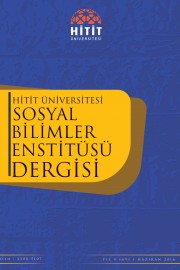Tarsus (Makam Cami) İnsanlarında Ağız ve Diş Sağlığı
The Oral and Dental Health of the People in the Tarsus Authorities Mosque
Author(s): Pınar Gözlük Kırmızıoğlu, Okşan Başoğlu, Cesur Pehlevan, Erdal Eser, Betül Kocaoğlu, Hasan Topdemir, Nevzat TorunSubject(s): Cultural Anthropology / Ethnology, Culture and social structure , Health and medicine and law, 18th Century, 19th Century
Published by: Hitit Üniversitesi Sosyal Bilimler Enstitüsü
Keywords: Tarsus; 18th -19th Century; Dental and Jaw Pathology; Oral Health;
Summary/Abstract: In this study, with the total of 37 jaw and 210 permanent teeth of adult individuals dating back to 18th-19th century has been recovered from the excavations in the narthex of the Tarsus Authorithy Mosque and examined in terms of paleopathology. Lessions such as tooth wear (% 95,37), tooth decay (% 28,09), hypoplasia (% 14,29), calculus (% 50,95), abscess (% 1.67 on), alveolar loss (% 64,86) and pre-death (antemortem) tooth loss (% 12,78) is found on the permanent teeth and in the jaw of adults in Tarsus Mosque. The data obtained is compared with other ancient Anatolian populations who lived in the different times and in different geographical environments, lesions such as dental caries and calculus was recorded higher in the surveyed community than in many of the other populations. Alveolar bone loss rate is also high. However, this lesion value is very close to many of the compared community values. Tarsus is a region where agriculture is done intensively due to it’s arable soil. Tartar and tooth decay in the permanent teeth of Tarsus adults detected at high rates encourages the agricultural way of life in the region. At the same time, high alveolar bone loss and the formation of dental calculus individuals suggest that individuals examined did not pay much attention to their oral hygiene.
Journal: Hitit Üniversitesi Sosyal Bilimler Enstitüsü Dergisi
- Issue Year: 9/2016
- Issue No: 1
- Page Range: 99-118
- Page Count: 20
- Language: Turkish

